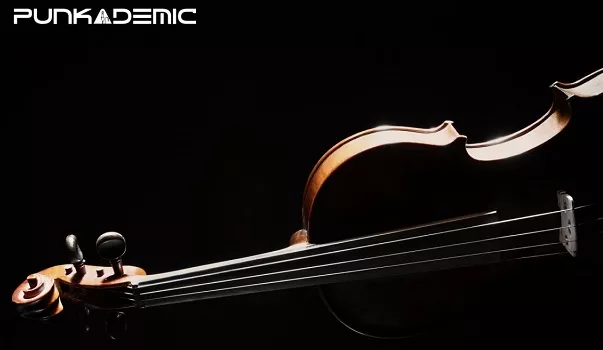Punkademic Orchestration Masterclass Part 4: Writing for Strings TUTORIAL
This course is certified 5-stars by the International Association of Online Music Educators and Institutions.
100% Answer Rate! Every single question posted to this class is answered within 24 hours by the instructor.
Are you a music maker, performer, composer, or aspiring songwriter looking to up your game? This is the place to start.
It’s time to learn orchestration to give your music the power and the passion that it deserves.
Orchestration is the study of each instrument in the orchestra, how they work, how to write for them, and how each instrument collides with the others to make new sounds. Think of it like painting: The orchestra is your palette of colors. But you don’t want to just mix them all together. You need to understand some principles of mixing those colors together before you put your brush on canvas.
In this series of classes we are going to work on three things:
- Instrumentation: Knowing how all of the instruments in the orchestra work, and how to write for them in an idiomatic way.
- Composition: Using the orchestra to write powerful music. Learning how to blend the different sounds of the orchestra to make a new, unique, sound.
- Synthestration: Using common production software (Ableton Live, FL Studio, Logic Pro, Pro Tools, Cubase, etc.) to create a realistic orchestra sound using sample libraries.
In this class, “Part 4: Writing for Strings” we are going to focus on the strings as a foreground, middleground, and background section. We will explore using the strings for melody, harmony, and texture, while also exploring the techniques that Beethoven used in his string writing.
If you don’t know me, I’ve published a lot of classes here. Those classes have been really successful (top sellers, in fact!), and this has been one of the most requested classes that my students (over 1,000,000 of them) have asked for. I’m really excited to finally be able to bring this to you.
Here is a list of some of the topics we will cover:
- Foreground writing
- Putting the melody in the violin, viola, cello, or bass
- Staying clear of the melody in terms of range
- Putting the background above the foreground
- Color as separation of foreground and middleground
- Texture as separation of foreground and middleground
- Middleground writing and Techniques
- Texture and Rhythm
- Rhythmic Variation
- Background writing
- Homophonic writing
- Polyphonic writing
- Monophonic writing
- Monorhythmic writing
- Looking at the masters: Beethoven, Symphony No. 1
- And Much, Much, More!
What you’ll learn
- Compose music for the orchestra
- The unique properties of every instrument in the orchestra
- How writing for the orchestra works, including scores, parts, shared parts, and more.
- Making your synthesized orchestrations sounds great!
- How to write music for brass.
- How to write music for voice and choir
- Writing music for strings
- Composing for orchestra, composing for string orchestra, composing for string quartet



